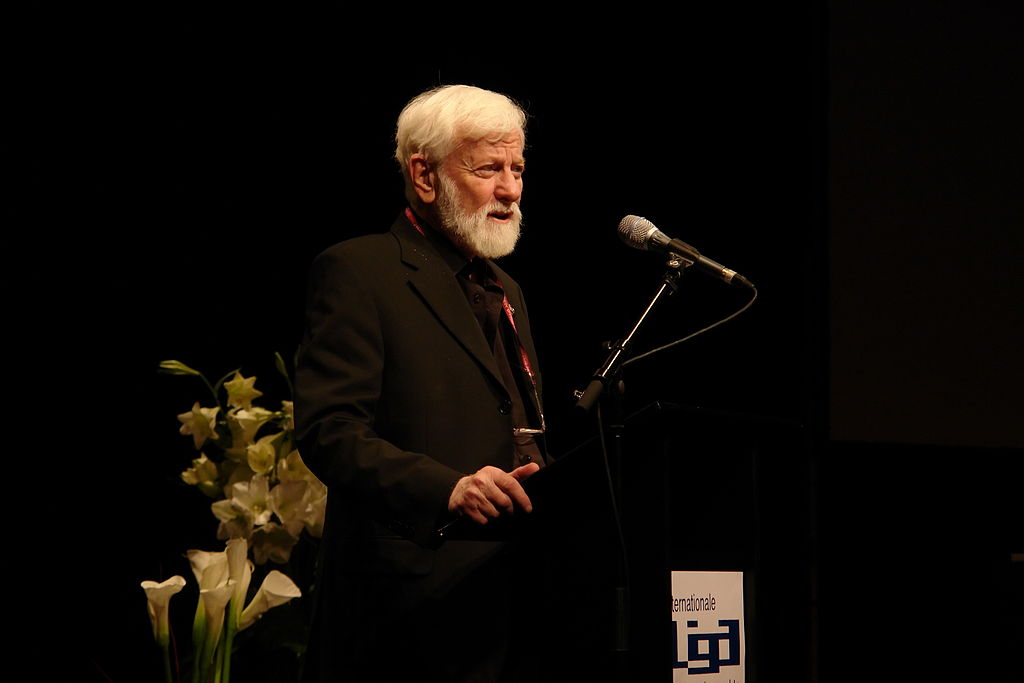by Dahlia Scheindlin
Fifty-fever marking the anniversary since the 1967 war has swept both the Israeli Left and the Right. The Right is dreaming up ever more creative ways to celebrate Israel’s triumph — the culture minister recently wore a dress screen-printed with scenes from Jerusalem to the Cannes Film Festival — while the Israeli Left is grasping for ways to remind a largely-apathetic public about the ills of occupation.
Still, the often-overlooked fact is that 50 years of Israeli occupation is also a half-century of opposition. It is true that the core goal of ending occupation has failed and there is no political resolution in sight. But the history of opposition holds elements of success. In fact the often-derided “peace industry” has produced not just dialogues and demonstrations but has helped legitimize ideas in Israel that form the core principles for resolving the conflict.
In the Beginning, There Were Doubts
The start of opposition to Israel’s policy in the territories captured in 1967 go back to the war itself. Its consequences have never been a consensus in Israel.
Shortly after the war, the scientist cum conscience-philosopher Yeshayahu Leibowitz railed against prolonged military rule over the Palestinians. He argued that Israel would lose its Jewish majority and Israelis would turn into security-obsessed occupiers, while destroying Palestinian society.
But even during the war, on its fifth day, a parliamentarian named Uri Avnery called openly on the prime minister to give the captured land to the Palestinians so that the latter could establish an independent state. In August 1967, the writer Amos Oz wrote an open letter calling to end the occupation.
This same phase saw the birth of the settlements. But in 1970, a nascent movement of IDF pre-recruits protesting their service in “the territories” emerged – some would later refuse. In 1978 a letter signed by several hundred officers protested government policy “perpetuating its rule over a million Arabs,” which they argued “could harm the Jewish-democratic character of the state.” The letter became a touchstone moment in the formation of Peace Now.
Today these words sound standard. But at the time, they were shocking. In 1978, just five percent of Israeli Jews polled supported withdrawal from the West Bank and 91 percent rejected the establishment of a Palestinian state, according to news reports. There were already over 5,000 settlers. Uri Avnery suffered attempts on his life, the offices of his newspaper were bombed, and Golda Meir openly longed for him to be banned from the Knesset.
During the 1970s and ’80s, three core ideas emerged from the Left: the notion that the occupation was bad for both Israelis and Palestinians and should end; that settlements were damaging to peace; and that there should be a Palestinian state.
Despite social opprobrium, the most radical of these — the establishment of a Palestinian state — or the two state solution, endured. PLO figures were considering this goal from the mid-1970s, and the PLO formally adopted the notion (implicitly) in 1988. Opinion in Israel began to shift. By the 1993 Oslo accords, Israeli Jewish public support for a Palestinian state was roughly one-third. By the mid-1990s public support reached half, then topped 60 percent in the 2000s (based on data of Israeli Jews from the Institute for National Security Studies).
Losing Momentum, Changing Direction
The failure of peace negotiations in the summer of 2000 and the outbreak of the second Intifada saw severe violence on both sides through the first half of the 2000s. Settlements had ballooned and by 2000, there were roughly 300,000 Jewish settlers in the West Bank and East Jerusalem. The Oslo framework breaking the West Bank and Gaza into segments and restricting Palestinian movement remained, but the diplomatic progress towards a two-state separation ground to a halt.
Israeli human rights activists tended to formally steer away from advocating specific political frameworks for resolving the conflict. They sought an objective human rights standard that could transcend politics, that they could demand of any party in power.
Some in the Left wondered if the improvement of piecemeal human rights without addressing the underlying political policy that caused the violations might actually make the occupation more sustainable. Those voices remained committed to a political solution.
Two States Fade
But by the late 2000s, the implementation of two states began to seem increasingly remote. In 2009 a far-right government took over Israel; Palestinian leadership was divided and weak. The settlement juggernaut, with the accompanying infrastructure and IDF land takeovers, continued to spread.
An idea that was long found only on the marginal fringes of the Left in Israel began to reappear in public discourse: one single, democratic state with equal rights for all.
It became a heated debate, sparking countless articles and arguments in various left-wing forums such as J Street, from roughly the beginning of the new decade in 2010. Committed two-state advocates found themselves defending the position to the growing number who felt the window had closed.
The truth, however, was that one-state never truly launched. After decades of occasional consideration (going back to the early-20th century), only 20 percent of Israeli Jews, and over one-third of Palestinians support it, in the December joint survey by the Palestinian Center for Policy and Survey Research (proper disclosure, I am the Israeli researcher on this project). Both the Israeli and Palestinian leadership are formally against it; and many Left and centrist organizations, including the main center-left parties in Israel, have made one state into a scare tactic, to convince Israelis that a two-state solution is urgent.
By 2016, the number of settlers had roughly doubled since 2000, approaching 600,000. The two-state solution appears more unlikely every day. Although settlements represent the bullseye target of left-wing opposition for decades, some feel that instead of fighting windmills, there is a need for new solutions. Fifty-five percent of all Israelis still support the two-state solution, but just half of Jews, according to the December 2016 survey.
Waning prospects have driven new ideas again. In recent years, some have begun to envision a modified version of two states, based on two governments for two peoples, with different national identities and a geographic border. But instead of a hard separation, this approach envisions a porous border. Citizens of either side would be allowed to cross for travel, leisure, work or even residency unless they pose an individual security threat — to replace the collective restriction of movement that exists today.
Rather than uprooting massive numbers of settlers as the traditional two-state solution would require, with the accompanying potential for internal Israeli social breakdown, this approach allows for citizens of each side to live as permanent residents in the other state – under local laws, with full rights, but national voting in one’s country of identity (Arab citizens of Israel can choose their citizenship, or retain both).
Jerusalem would remain united, the capital of two states, under a unified municipality representing both populations, to provide municipal services. Holy sites would be protected by religious authorities like today, and perhaps an international body. Security cooperation between Israeli and Palestinian security forces can continue as it is today — in fact this is one of the only successful forms of cooperation today. The situation is precarious because Palestinians view security cooperation as collaboration with the occupation. But under a framework of independence, joint security need not be a magnet for political anger. Other joint authorities could be establish to manage natural resources, and help with economic integration.
The word “confederalism” or “confederation” scares many. But it is interesting to note that the initiative has sparked interest and curiosity among settlers and other right-wing figures, the classic spoilers in all previous two-state efforts. An organic social community has grown up around the idea, called “Two States/One Homeland” with diplomats and policymakers expressing significant interest.
And it is worth remembering that what the Left says has often sounded radical, shocking, or frightening at first — but some of its core concepts go mainstream over the years. Perhaps a two-state confederation is the next.
Dahlia Scheindlin is a leading international public opinion analyst and strategic consultant based in Tel Aviv, specializing in progressive causes, political and social campaigns in over a dozen countries, including new/transitional democracies and peace/conflict research in Israel, with expertise in Eastern Europe and the Balkans
A version of this article was first published in German on taz.de, and is reprinted here with permission. Republished, with permission, from +972 Magazine. Photo: Uri Avnery in 2008.






The above comment by Tony Riley ??serves as a classic example of the too often used diversion tactic, when it comes to the FACTS that surround any Palestinian-Israeli discussion. When unable to challenge the presented unquestionable information/facts; just resort to attacking the integrity of the source/writer and discredit the reputation of the news outlet employed to inform the reader. This tactic wrongly presumes that the reader is unable to filter the diversion from the facts. Hence, that discrediting tactic end up solidifying the integrity and validity of both the source/writer and the news outlet. This overused tactic is losing is intended efficacy more and more, as reflected by the number of individuals, organizations and countries that area finally wrapping their heads around the fact that the current situation in the region can only be described as a apartheid state with an ultimate annex the entire land to the detriment and injustice of its native inhabitants.